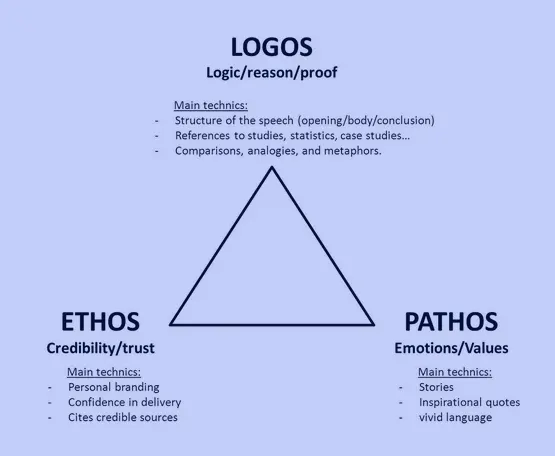You may be wondering What Is Ethos Pathos and Logos? In persuasion, there are three important elements. They are ethos, pathos, and logos. Ethos is about credibility, pathos is about emotion, and logos is about logic.
In rhetoric, there are three main ways to appeal to an audience: ethos, pathos, and logos.
Ethos is an appeal to ethics, and it is a way of convincing an audience of the speaker’s credibility or character.
Pathos is an appeal to emotion, and it is a way of convincing an audience by stirring up their emotions.
Logos is an appeal to logic, and it is a way of convincing an audience by using reasoning or facts.
Discovering the Diversity of the United States: A Complete List of States in USAAll three of these appeals can be used in writing or speech, and they can be used alone or in combination with each other.
Ethos
Ethos is an appeal to ethics. It is a way of convincing an audience of the speaker’s credibility or character.
For example, if a lawyer is trying to convince a jury that their client is innocent, they might use ethos by talking about their experience as a lawyer or by pointing out that they have never lost a case.
Will Airplane Mode Prevent Roaming Charges Verizon?Pathos
Pathos is an appeal to emotion. It is a way of convincing an audience by stirring up their emotions.
For example, if a commercial is trying to sell a product, it might use pathos by showing a sad story about a family that has been affected by a disease.
Logos
Logos is an appeal to logic. It is a way of convincing an audience by using reasoning or facts.
Can You Get Rich Off Stocks? Find Out Now!For example, if a scientist is trying to convince people that global warming is real, they might use logos by presenting data about the rise in temperatures over the past century.
All three of these elements are important. You need to have all of them to be persuasive.

Difference Between Rhetoric and Persuasion – Rhetoric vs Persuasion
It is often said that rhetoric and persuasion are the same things. However, there is a big difference between the two concepts. Rhetoric is the art of using language to persuade or convince someone of something. It can be used to make an argument more persuasive or to make someone more likely to take action. Persuasion, on the other hand, is the act of convincing someone to do something.
The Angry Man Illusion Will Blow Your Mind!Rhetoric is often used in public speaking, to make a speech more persuasive. A good rhetoric speaker will use language to appeal to the emotions of the audience and to make logical arguments. Persuasion, on the other hand, is more private. It is often used in one-on-one situations, to convince someone to do something that they may not want to do.
Many different techniques can be used for persuasion. Some of these include:
Appealing to emotions: This is one of the most common persuasion techniques. When we appeal to someone’s emotions, we are trying to make them feel something. This can be done by telling a story, or by using language that will create an emotional response.
Making a logical argument: Another common persuasion technique is to make a logical argument. This means that we use evidence and reasoning to show why someone should do something.
Using authority: Another way to persuade someone is to use authority. This means that we use someone who is an expert on the subject, or who has a lot of experience, to convince someone to do something.
There are many other persuasion techniques, but these are some of the most common. Rhetoric and persuasion are two very different things. Rhetoric is the art of using language to persuade, while persuasion is the act of convincing someone to do something.







